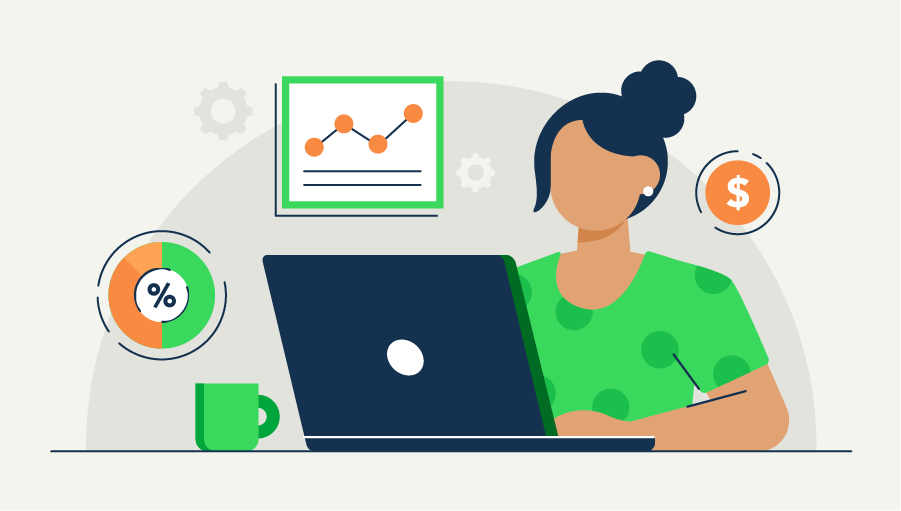Budget and forecast are important tools in financial planning for businesses. While they share some similarities, there are key differences between the two. Let’s look at three ways in which budgets and forecasts differ:
1. Why you create them
A budget and a forecast provide a roadmap for allocating resources and guide your operations and decision-making. But businesses tend to create:
- A budget to set financial goals and track performance.
- A forecast to predict future financial outcomes and make informed decisions.
Budgets help businesses maintain financial discipline by avoiding overspending and ensuring you manage effectively. It allows businesses to plan for future investments, expansion, or debt reduction by allocating resources accordingly.
Using a forecast offers several benefits for businesses. You can use them to create pro forma financial statements or optimize operations by aligning resources and activities with projected financial outcomes. It also helps identify potential financial gaps or shortfalls, allowing businesses to take proactive measures like securing additional funding or adjusting their spending plans.
2. What periods they cover
Budgets and forecasts serve distinct purposes in business planning and tend to cover different periods (although they can cover the same ones). The periods they cover are:
- Budgets generally cover set periods, such as one year.
- Forecasts cover longer-term periods, such as many years.
Budgets, once set, remain in place for the period. They provide a plan of action for the upcoming year. Forecasts can span several years, but you will want to update them on a rolling basis, such as monthly.
Updating your forecasts will ensure accuracy and relevance. It’s a tactical tool that helps businesses monitor and adjust items like inventory forecasts in response to changing market trends and business conditions.
3. What they track
Budgets and forecasts also differ with what they track, in particular:
- Budgets primarily track planned revenue and expenses.
- Forecasts track predicted financial outcomes.
A budget's key metrics or components include revenue targets, variable costs, and debt reduction goals. By setting revenue targets and estimating expenses, budgets enable business owners and management teams to monitor progress and make necessary adjustments to achieve desired financial outcomes.
Forecasts project future financial outcomes based on historical data, market trends, and business conditions. You can also forecast in different ways, such as top-down vs. bottom-up forecasting.
Tracking these metrics helps business owners and management teams anticipate revenue fluctuations, prepare for market changes, and make well-informed decisions.
Best practices for budgeting and forecasting
Ideally, you’ll use a budget as a management tool to run the business. Compare your results to your budget periodically to see how you’re doing. If expenses in a certain area exceed your budget, dig deeper to see if the overage is from overspending.
Are revenues and profits on track with the budget? Did the company add additional revenue or lose business that was part of the budget? Reviewing the budget is a key step in managing your business finances.
Here’s how to get the most out of your budgeting efforts:
- Start with a realistic projection: Your revenue projections will drive this part, but you should also do a cash flow projection and be conservative here.
- Differentiate expenses: Break out your essential expenses, like electricity and internet, from your discretionary expenses, which are not essential to running the company, such as entertainment.
- Build in debt and cash: Include debt payments and incorporate building cash reserves into your budget to ensure any extra profits are a cushion against a future downturn in business.
Forecasting is an important tool to help a company make necessary adjustments in spending and focus during the year as the business changes. For example, if a major customer plans to reduce or add to their volume of business, this will have a significant impact on operations and cash flow.
Here are some best practices for forecasting:
- Consider using more than one forecast: Generally, you’ll want to create three. One that reflects an optimistic outlook, one that’s pessimistic, and one that’s most likely to happen. You can then plan for growth but must be able to make adjustments in case opportunities don’t materialize or happen slower than originally thought.
- Update your forecast regularly: Things change, such as market conditions, so you can prepare by updating your forecast monthly or quarterly.
- Involve key members of your team: Leverage managers or your sales team to get a better look at what’s happening in your markets. Your forecast will be more accurate with this information.
Using a budget and forecast, businesses can establish realistic financial goals, track their progress, and ensure long-term viability.
Run your business with confidence
While budgeting and forecasting are different functions, they are most useful when put in action together. A good forecast feeds the development of a sound budget. During the year, comparing the most recent forecast to the budget for the rest of the period can help the company adjust to changing business conditions.
To effectively utilize budgeting and forecasting, it’s crucial to have a flexible and accessible solution. The solution should be easy to use, allowing business owners and team members from different departments to collaborate seamlessly. Accounting software, such as QuickBooks, can help generate budgets and projections without much effort.













